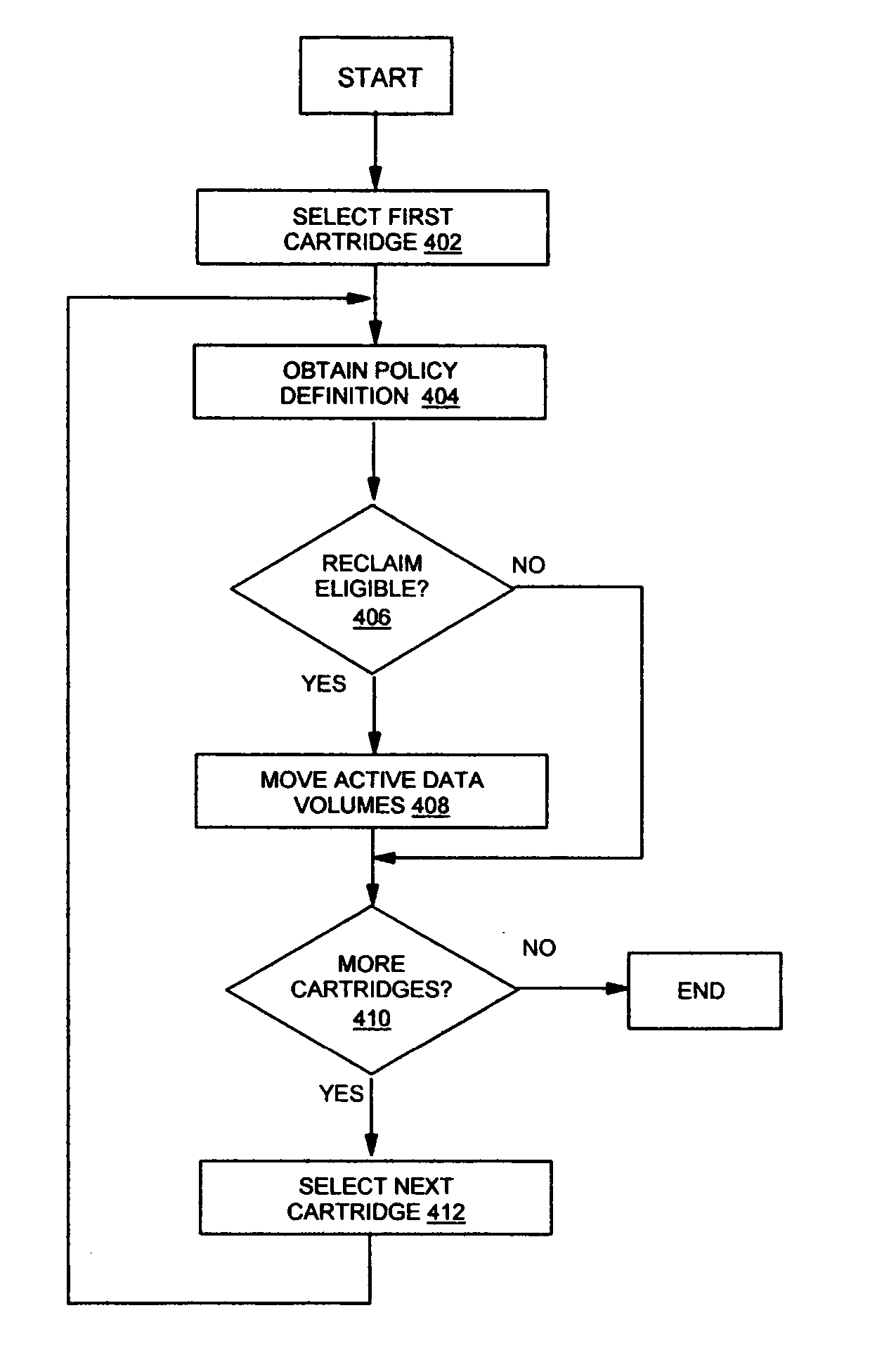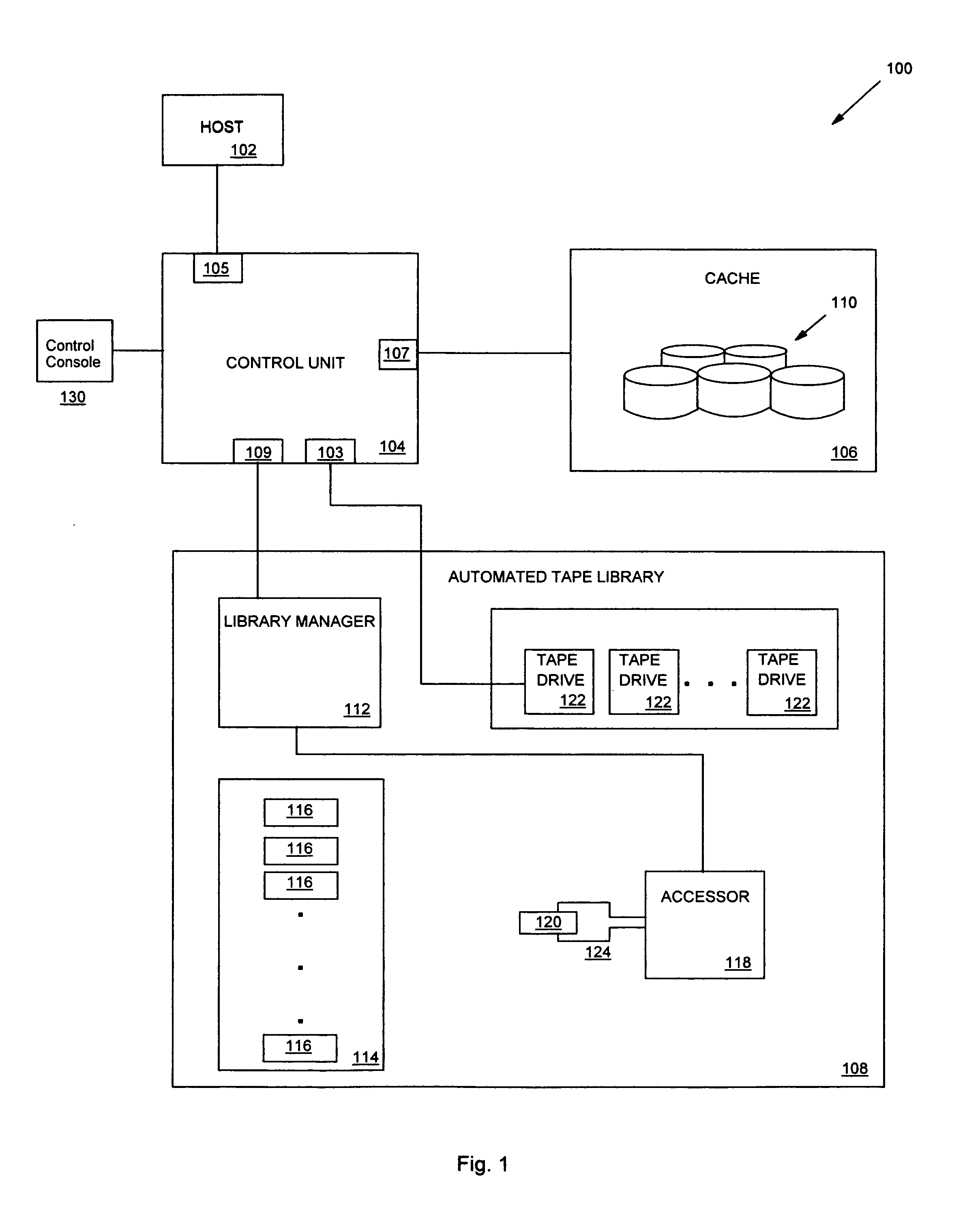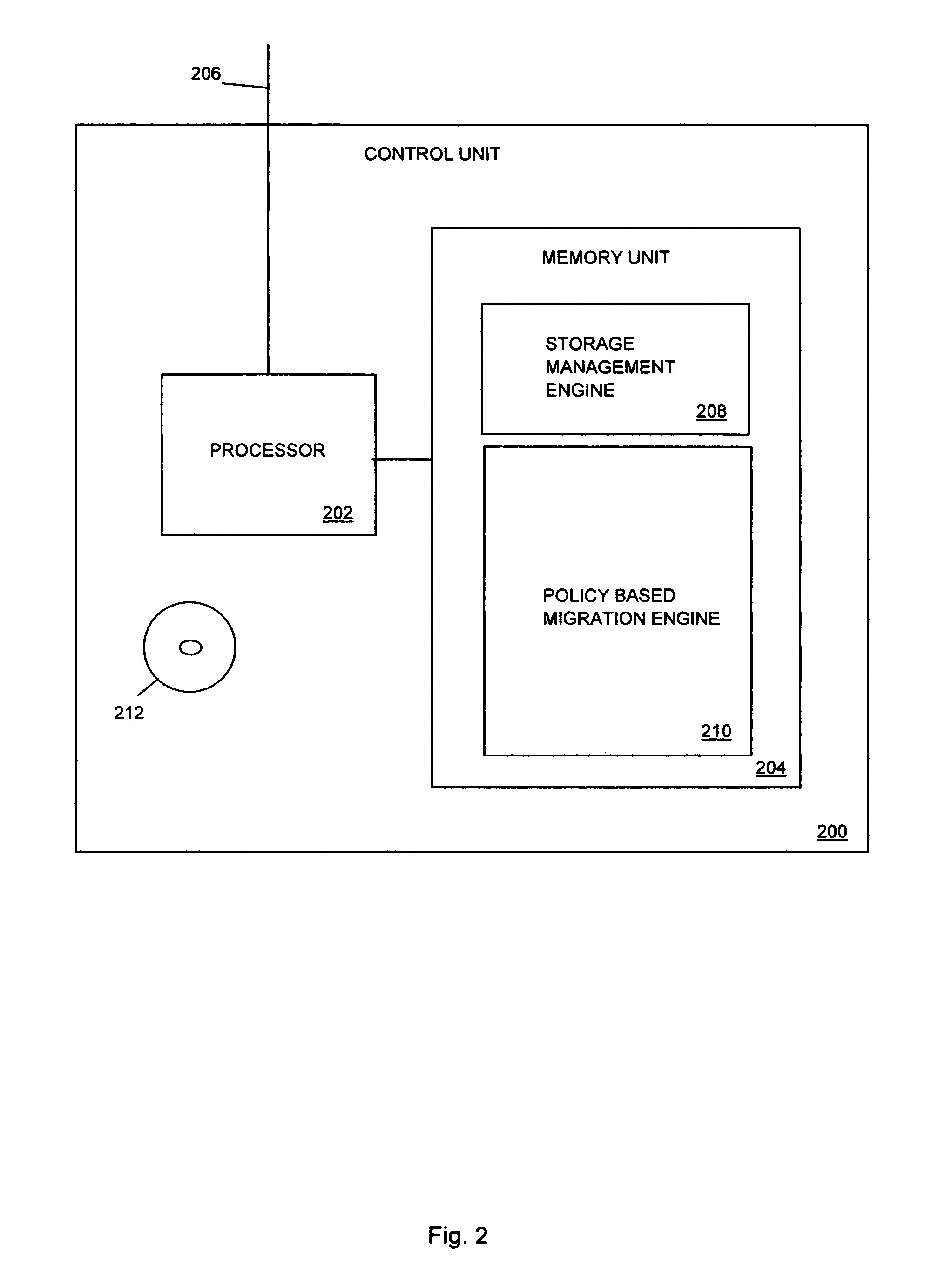Policy based data migration in a hierarchical data storage system
a data storage system and policy-based technology, applied in the field of data storage and data processing, can solve the problems of inability to overwrite, inability to use, and relatively high percentage of inactive data, and achieve the effect of improving the data management of a hierarchical storage system, efficient data migration, and increasing storage spa
- Summary
- Abstract
- Description
- Claims
- Application Information
AI Technical Summary
Benefits of technology
Problems solved by technology
Method used
Image
Examples
Embodiment Construction
Introduction
[0023] The management of tape cartridges in a Virtual Tape Server (“VTS”), and the data on such cartridges, is a challenging task. A VTS can contain thousands of tape cartridges, and the data on these tape cartridges must be efficiently spread across available resources. Within a VTS, it is often necessary to migrate data on the tape cartridges to other storage devices of the VTS to take advantage of the efficiencies provided by such other storage devices. Accordingly, the present invention groups tape cartridges into logical groups called pools and provides methods to efficiently transfer the data from one pool to another pool according to specific policies. This process is referred to herein as policy based migration. Depending on whether a given policy is satisfied, a reclamation process, for example, can be used to copy data from a source cartridge to a destination cartridge and reclaim the source cartridge. Using the reclamation process in this way provides a numb...
PUM
 Login to View More
Login to View More Abstract
Description
Claims
Application Information
 Login to View More
Login to View More - R&D
- Intellectual Property
- Life Sciences
- Materials
- Tech Scout
- Unparalleled Data Quality
- Higher Quality Content
- 60% Fewer Hallucinations
Browse by: Latest US Patents, China's latest patents, Technical Efficacy Thesaurus, Application Domain, Technology Topic, Popular Technical Reports.
© 2025 PatSnap. All rights reserved.Legal|Privacy policy|Modern Slavery Act Transparency Statement|Sitemap|About US| Contact US: help@patsnap.com



